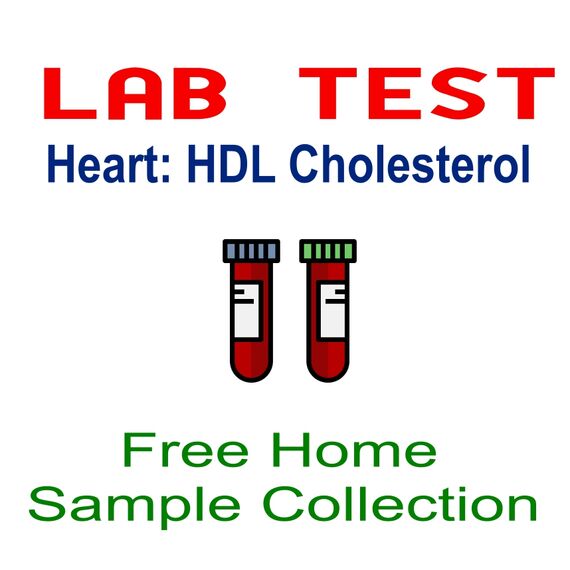This test is aslo known as High Density Lipoprotein Test or High Density Lipoprotein Cholesterol Test or HDL-C Test or Good Cholesterol Test
The purpose of HDL-C testing is to assess your cardiovascular health, including your risk for heart disease. HDL cholesterol is often referred to as "good cholesterol" because it plays an important role in removing excess cholesterol from the bloodstream and transporting it to the liver for excretion..
Measuring HDL-C and total cholesterol together in the same blood sample allows the doctor to easily calculate the ratio of HDL-C to non-HDL cholesterol. This is important for assessing your cardiovascular health and allows the doctor to understand the relative amounts of good and bad cholesterols.
Testing HDL-C can play a role in screening, monitoring, and diagnosing problems that affect your heart, blood vessels, and blood circulation.
Other Lab Tests Ordered Parallel To An HDL Cholesterol Test
When an HDL Cholesterol test is ordered, it's usually part of a broader evaluation of lipid status and cardiovascular risk. More often, the following tests are ordered parallel to this test:
1. LDL Cholesterol (Low-Density Lipoprotein Cholesterol):
Aim: To measure the level of LDL cholesterol, often referred to as "bad" cholesterol.
Why Is It Mandated: LDL cholesterol is a primary driver of atherosclerosis and is a crucial indicator of cardiovascular risk.
2. Total Cholesterol:
Aim: To measure the total amount of cholesterol in the blood.
Why Is It Mandated: To provide a comprehensive view of cholesterol levels, which helps in assessing cardiovascular risk.
3. Triglycerides:
Aim: To measure the level of triglycerides, a type of fat in the blood.
Why Is It Mandated: Elevated triglyceride levels are associated with an increased risk of atherosclerosis and can be an indicator of metabolic syndrome.
4. VLDL Cholesterol (Very Low-Density Lipoprotein Cholesterol):
Aim: To estimate the level of VLDL cholesterol, which is a carrier of triglycerides.
Why Is It Mandated: VLDL is another contributor to plaque buildup in arteries.
5. Lipid Panel or Lipoprotein Profile:
Aim: To provide a comprehensive assessment of lipid levels, including HDL, LDL, total cholesterol, and triglycerides.
Why Is It Mandated: To assess cardiovascular risk and to guide treatment decisions for lipid-lowering therapies.
6. Apolipoprotein B (ApoB):
Aim: To measure the amount of ApoB, a protein found in LDL and VLDL particles.
Why Is It Mandated: ApoB is a marker of the number of atherogenic particles and can provide additional risk assessment, especially in individuals with high triglycerides or diabetes.
7. C-Reactive Protein (CRP), especially high-sensitivity CRP (hs-CRP):
Aim: To measure the level of CRP, a marker of inflammation.
Why Is It Mandated: Hs-CRP can provide information about cardiovascular risk, as inflammation plays a role in atherosclerosis.
These tests, when ordered alongside an HDL Cholesterol test, provide a comprehensive picture of an individual’s lipid status and cardiovascular risk. They are critical in diagnosing and managing conditions like hyperlipidemia, atherosclerosis, and in making decisions about interventions such as lifestyle changes or medications to lower lipid levels. The specific combination of tests will depend on the individual’s medical history, risk factors, and current health status.
A HDL Cholesterol test is usually ordered as part of a routine lipid panel, especially for those with risk factors for heart disease. It may also be ordered:
- To assess the risk of developing cardiovascular diseases, especially if one has risk factors like smoking, hypertension, family history of heart disease, diabetes, or being overweight.
- To monitor the effectiveness of treatments aimed at increasing HDL levels or overall cholesterol management.
- As a follow-up, especially after starting medications that might affect cholesterol levels.

If HDL Cholesterol measurement is to be performed along with Triglycerides, the patient should be fasting 9-12 hours prior to collection.
None
Same day or next day
A blood sample drawn from a vein in your arm known as "Vanipuncture".
Sample report in a format
No reviews found




